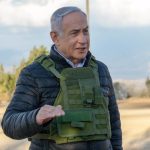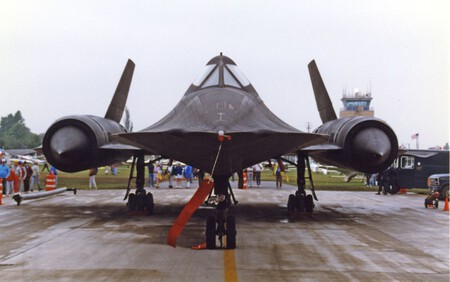It may not seem so because of its appearance, so futuristic that it would not be out of place among the props of a movie from the Marvel universe, but the spy plane SR-71 “Blackbird” it is a relic of the Cold War. When it first flew, in 1964, the Oval Office was occupied by Lyndon B Johnsonjust a few years ago bay of pigs invasion and relations between Washington and the Kremlin were tighter than the skin of the drums that, from time to time, sounded of imminent war.
If there is a peculiarity for which it stands out the SR-71beyond his appearance, his display of technology and even his devilish speed, which allowed him to exceed 3,500 kilometers per hour (km/h), is the success it represented for the US. And not only in the field of weapons or aeronautical engineering, that too. Before even leaving the hangars of Skunk Works and buzzing through the skies, the aircraft was already something for American intelligence.
The reason: to build it he had to score a great goal for the USSR.
a resounding, capital and sonorous goalso epic that even today, six decades later, it continues to be commented on in the historical chronicles.
We explain ourselves.
“Everything had to be invented”
In the early 1960s, the US authorities were clear that they needed a new weapon that would allow them to keep up with the Cold War. In May 1960 the USAF had watched with a knot in his stomach as one of his U-2 “Dragon Lady”a model released the previous decade, was shot down over Soviet territory with a burst of air-to-surface missiles SA-2 and the pilot who drove it, the experienced Francis Gary Powerscaught.
The Cold War was heating up. And the US needed a new surveillance plane. Faster, capable of flying at higher altitudes and putting sophisticated Soviet radars against the ropes. Washington needed, in short, to reinvent the concept of the espionage aircraft. And like other times he used Lockheed, manufacturer of the U-2, and the Skunk Works development program.
The challenge brought them. “Everything had to be invented. Everything”, I would confess years later Kelly Johnson, designer and part of the Skunk Works team who took on the task of “building the impossible, an airplane that couldn’t be shot down.” Perhaps in that statement there is an excess of epic, but of course the task was not easy.
The USAF wanted an aircraft capable of exceeding 2,000 mph (3,200 km/h) on a sustained basis and during long flights, not just in short bursts, something other aircraft already offered. The design should also be “secretive”, capable of evading constantly evolving Soviet radars and avoiding another incident like that of the U-2 and Francis Gary. “The CIA wanted an aircraft that could fly above 90,000 feet, at high speed, and as invisible to radar as possible,” explains to Peter Merlinauthor of ‘Design and Development of the Blackbird’.

The latter was achieved by redesigning the plane to reflect the signals. “The engines were moved to a more subtle position in the middle of the wing and an absorbent element for the radars was added to the paint”, recounts Lockheed.
With a first scale model, Skunk Works carried out tests in a secret facility in the Nevada desert, protected from the surveillance of Russian satellites, which produced “impressive” results. The baptized Blackbird (blackbird), about 30 meters long, appeared on enemy radar as a small mark, bigger than a bird but smaller than a man. “The team had managed to reduce the cross section of the radar by 90%“, highlights the company. All somewhat for US interests.
More complicated was the speed.
Flying at more than 3,000 km/h for extended periods meant subjecting the plane to a hellish frictionwith enormous temperatures that surpassed the 300ºC in the leading edges. A major technical challenge that required careful attention to both design and materials, and which led Ben Rich, from Skunk Works, to opt for a black paint capable of absorbing heat, among other solutions. His decision would end up contributing to the popular nickname the ship earned.
“The speed limit of the plane has nothing to do with the plane, ironically, but with the engines. Right in front of it was a temperature probe. When it was around 427ºC, that was the fastest we could go,” would later explain to the BBC Colonel Rich Graham, former SR-71 pilot. Once the 427ºC was exceeded, the engine manufacturers simply were not responsible for what happened. “It could break or the turbine blades could come off.”
It was not the only challenge.
Ask for help… without being noticed
With temperatures of 300ºC at the leading edges and the rest of the aircraft subjected to close to 200ºC, the experts calculated that the fuel it carried in its main tanks, some 80,000 pounds of gas, would heat up to enormous temperatures, thus increasing the chances of an explosion or fire. To fix it, Johnson had to develop the JP-7a special fuel with a flash point so high that —I would get to joke Graham– allowed to put out a match or the butt of a cigarette in it without igniting.
The redesign of the plane, the use of black paint, the layout of the engines, the development of a new fuel… were key steps for the Blackbird to take flight, but there was an even bigger and more important challenge: with what build it? What material could withstand the high temperatures of flights? The conclusion of the experts was that the best candidate for the structure was the titanium alloy, resistant, light and capable of withstanding heat.
The problem with titanium, apart from how devilishly complicated it was to work with it or the brittleness of the alloy if it was handled badly, is that getting it was a toothache. And not because of availability. Or that wasn’t strictly the reason. The big challenge is where the supply left. If the Skunk Works technicians wanted to get hold of the material, they had no choice but to knock on the door of the USSR… Exactly, the same power with which they maintained a strained relationship and for whose surveillance the SR-71 was being built!

“The plane has 92% Titanium inside and out. When they were building the plane, the US did not have the necessary mineral, called rutile. It is found only in very few parts of the world. The main supplier was the USSR,” Graham explains. It may seem like a minor handicap compared to the hours and hours of complex calculations that went into designing the SR-71, but against the backdrop of the Cold War that supply problem was a problem. thorny question.After all, the original Blackbird made its maiden flight in April 1962just a few months before the missile crisis from Cuba.
What did the US do to get out of trouble? mark him a goal to the USSR.
He maneuvered to get the material he needed without the Soviets knowing that they were contributing to the manufacture of the SR-71, a state-of-the-art aircraft designed to safely evade their radars and missiles and monitor them. How exactly Washington did it is something that is part of the thick mists that even today, decades later, cloud some dark chapters of the Cold War; but some of the protagonists have been leaving small brushstrokes.
“Our supplier, Titanium Metals CorporationWith only limited reserves of the precious alloy available, the CIA searched the globe and, using third parties and shell companies, managed to quietly purchase the base metal from one of the world’s leading exporters: USSR. The Russians never imagined that they were contributing to the creation of the plane that was being hastily built to spy on his homeland,” explains engineer Ben R. Richalias ‘father of stealth’in the book ‘Skunk Works’.
As the USSR probably would not have liked exporting materials for the US to equip itself with new weapons, the key – Graham abounds – went through a sophisticated bobbin lace that allowed it to erase its tracks. “Working through Third World countries and with fake operations, they were able to send the rutile ore to the US to build the SR-71,” emphasizes.
Some people, as The Aviation Geek Clubgoes further and ensures that one of the tricks of US intelligence was to make the Kremlin believe that all that precious mineral was being used for the manufacture of pizza ovens.
Whether it is real or not, the truth is that the CIA knew how to manage: the Skunk Works technicians obtained the necessary material and in April 1962 the first plane, the A-12, was already making its initial flight, writing the first verses of what would later become the SR-71a larger model, with a second place for a reconnaissance officer and more fuel capacity.
TO late 1964 the new aircraft, the same one that had been considered an “impossible”, was already buzzing through the skies at dizzying speeds.
All thanks to the key collaboration of the USSR.
Key, not aware.
Images: USAF/Judson Brohmer, D. Miller (Flickr) and Skyandsea876 (Flickr)
In Xataka: During World War II, the US wanted to reinvent the airplane. What came out was a flying saucer














